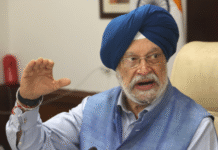New Delhi–With increasing penetration across consumer products, especially in semi-urban and rural markets, the Indian electronic products industry is expected to grow at a compound annual growth rate (CAGR) of 10.1 per cent to reach $75 billion by 2017 from $61.8 billion in 2015, a joint study said here on Monday.
“Rising manufacturing costs in China and Taiwan are compelling manufacturers to shift their manufacturing base to alternate markets. In 2014, the average manufacturing labour cost per hour in India was $0.92 as compared to $3.52 of China,” the study stated.
The market is dominated by electromechanical components — which form 30 per cent of the total demand — followed by passive components (such as resistors and capacitors) at 27 per cent, according to an Assocham-EY study titled ‘Turning the Make in India dream into a reality for electronics and hardware industry’.
The electronic components industry in India was valued at $13.5 billion in 2015 — growing from $10.8 billion in 2013 at a CAGR of 11 per cent.
India’s attractiveness for manufacturers is growing due to availability of low-cost labour.
The Indian manufacturing ecosystem for electronics and hardware industry is still at a nascent stage and faces various demand side as well as supply side challenges, it said.
Component demand in India is muted due to very limited value addition as primarily last-mile assembly takes place here.
However, manufacturers in India do not add high electronic content in the products due to limited industry-specific standards. The current market is dominated by secondary sales and primary sales are limited due to reduced disposable income in semi-urban and rural markets.
Due to nascent stage of electronics manufacturing in India, scale of operations is low, resulting in reduced cost competitiveness.
“India’s taxation system is complex, especially where indirect taxes are concerned. Currently, the base direct tax incidence in India stands at around 30 per cent, whereas the corresponding tariff in other Asian countries is between 16 per cent and 25 per cent,” the study said.
“Although, the government has proposed the implementation of Goods and Services Tax (GST) for a state-of the-art indirect tax system, there are concerns that the industry faces in terms of the clarity on the revenue-neutral rate, non-creditable tax on inter-state movement of goods, status of existing state incentives granted and transition from existing taxation system to GST regime,” it added. (IANS)







